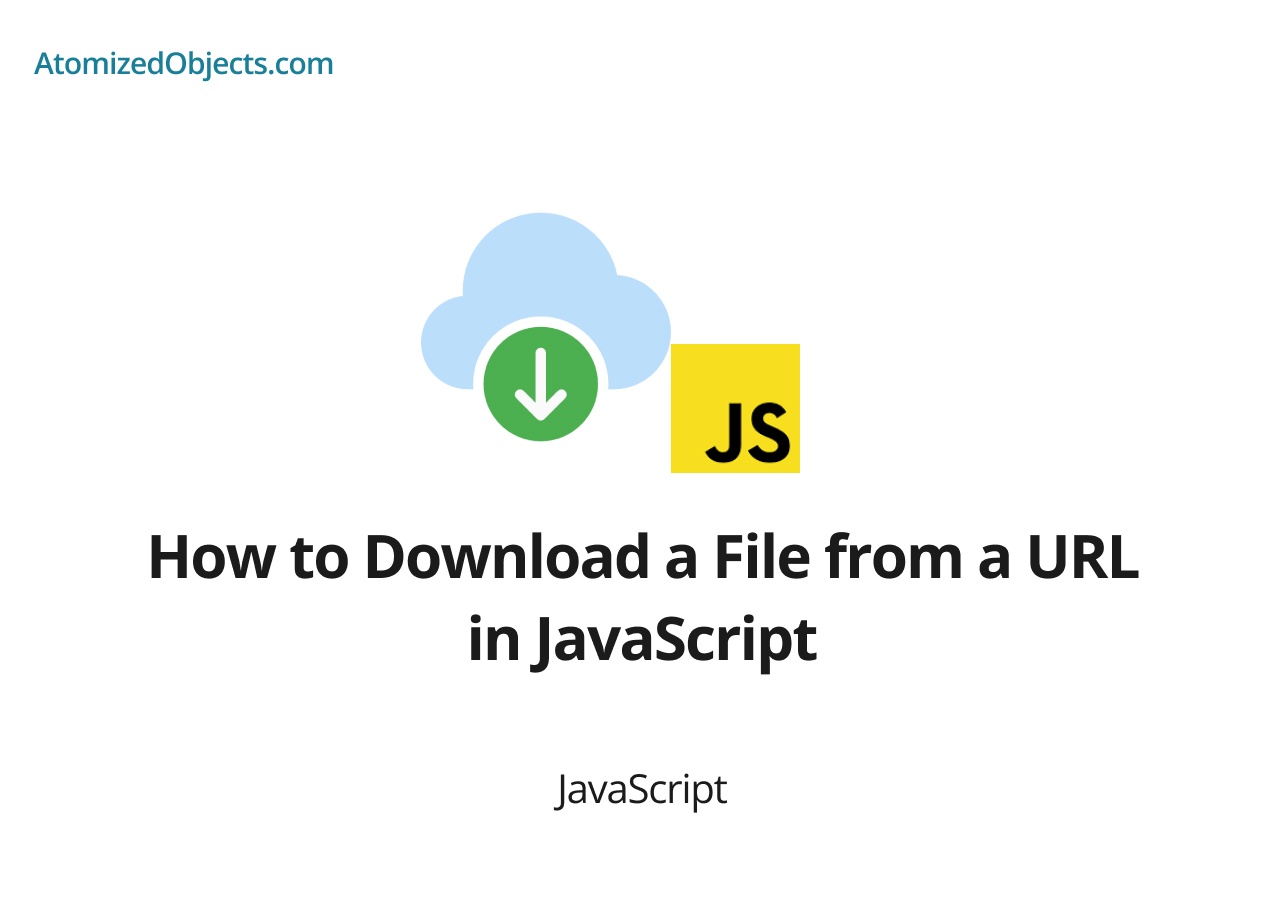


Will Mayger
Downloading files from URLs is a common task in web development, and JavaScript provides various methods to accomplish this. Whether you need to download images, documents, or any other type of file, JavaScript offers several approaches to handle file downloads. In this article, we will explore different techniques and methods to download files from a URL using JavaScript. We will cover the use of anchor tags, the fetch() API, and the XMLHttpRequest object. By the end of this article, you will have a solid understanding of how to implement file downloads in JavaScript.
Downloading a file from a URL typically involves sending a request to the server and receiving the file as a response. JavaScript provides different methods to initiate this process and handle the file download. The choice of method depends on your specific requirements, such as the need for customization, error handling, or compatibility with different browsers.
In the following sections, we will explore three commonly used approaches to download files from a URL in JavaScript.
a href="https://example.com/path/to/file.pdf" download>Download PDFa>In this example, the anchor tag points to the URL of the file you want to download ( https://example.com/path/to/file.pdf ). The download attribute specifies that the file should be downloaded instead of opening it in the browser.
This method works well for static URLs and allows users to initiate the download by clicking the link. However, it may not be suitable for dynamically generated URLs or scenarios where you need more control over the download process.
The fetch() API provides a powerful and flexible way to make HTTP requests, including file downloads. It supports handling different file types, error handling, and customization options.
Here’s an example of how to download a file using the fetch() API:
fetch('https://example.com/path/to/file.pdf') .then(response => response.blob()) .then(blob => const url = URL.createObjectURL(blob); const a = document.createElement('a'); a.href = url; a.download = 'file.pdf'; a.click(); URL.revokeObjectURL(url); >) .catch(error => console.error('File download failed:', error); >);In this example, we use the fetch() function to send a GET request to the file’s URL. We then handle the response as a Blob using the response.blob() method. The Blob object represents the file’s data.
If an error occurs during the download process, the catch block handles the error and logs an appropriate message.
This method provides more control over the download
process and allows for additional customization, such as setting custom headers or handling authentication.
Another approach to download files is by using the XMLHttpRequest object, which provides a traditional way to make HTTP requests in JavaScript.
Here’s an example of how to download a file using the XMLHttpRequest object:
const xhr = new XMLHttpRequest(); xhr.open('GET', 'https://example.com/path/to/file.pdf', true); xhr.responseType = 'blob'; xhr.onload = function () if (xhr.status === 200) const blob = xhr.response; const url = URL.createObjectURL(blob); const a = document.createElement('a'); a.href = url; a.download = 'file.pdf'; a.click(); URL.revokeObjectURL(url); > else console.error('File download failed:', xhr.status); > >; xhr.onerror = function () console.error('File download failed'); >; xhr.send();In this example, we create a new XMLHttpRequest object and specify the URL of the file we want to download using the open() method. We set the responseType to 'blob' to indicate that we expect a binary response.
The onload event handler checks if the response status is 200 (indicating a successful download). If it is, we proceed with creating a temporary URL for the Blob , creating an anchor element, and simulating a click event to trigger the download. Finally, we revoke the temporary URL.
If an error occurs during the download process, the onerror event handler logs an appropriate error message.
Handling errors during file downloads is an important aspect of providing a smooth user experience. Errors can occur due to various reasons, such as network issues, server errors, or incorrect URLs.
To handle errors during file downloads, you can utilize the catch block in the fetch() method or the onerror event handler in the XMLHttpRequest approach. By logging the error message or providing appropriate feedback to the user, you can ensure they are aware of any issues that arise during the download process.
Additionally, you can implement fallback strategies, such as displaying alternative download options or providing instructions for manual downloads in case the automated download fails.
While the techniques discussed above cover the basics of file downloads in JavaScript, there are additional advanced techniques and considerations you can explore:
Downloading files from URLs using JavaScript is a fundamental task in web development. By utilizing anchor tags, the fetch() API, or the XMLHttpRequest object, you can provide users with the ability to download files seamlessly.
In this article, we explored different methods and techniques for implementing file downloads in JavaScript. We covered using anchor tags for simple downloads, the fetch() API for more control and flexibility, and the XMLHttpRequest object for traditional requests. We also discussed handling errors, advanced techniques, and important considerations when dealing with file downloads.
By understanding these techniques and considering the specific requirements of your application, you can confidently implement file downloads and enhance the user experience of your web applications.
There we have how to Download a File from a URL in JavaScript, if you want more like this be sure to check out some of my other posts!
Good things are coming, don't miss out!
Follow me on Twitter to stay up to date and learn frontend, React, JavaScript, and TypeScript tips and tricks!
Follow me on Twitter
Some graphics used on this post were made using icons from flaticon.

In this post find out about how to Navigate Without Animations in React Native Navigation

Will Mayger
Blog / React-native
In this post find out about how to Add a Custom Font in React Native

Will Mayger
Blog / Javascript
In this post find out about how to Print in JavaScript Console

Will Mayger
Blog / React-native
In this post find out about how to Debug in React Native

Will Mayger

I am a VP Lead software engineer specializing in React, JavaScript and TypeScript with over 10 years of professional experience. I have worked with companies such as Atos, The Telegraph, Capgemini, Babylon Health, Jp Morgan Chase, and more. I am also an open source contributor to projects such as GatsbyJS.
Budget Planner & Tracker
More money in your pocket by the end of the month.
Free to use and no account needed.